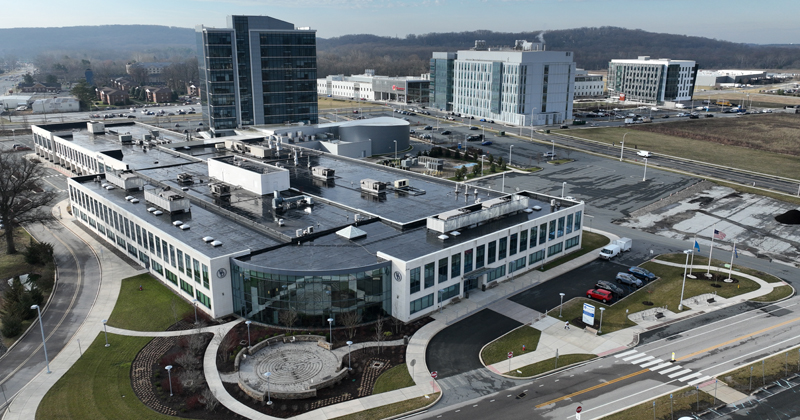
Photos by Kathy F. Atkinson and Dave Levandoski
October 26, 2023
Norbert Mórucz traveled more than 4,400 miles to attend the 2023 international conference of the Association of University Research Parks in Delaware, Oct. 16-19. Mórucz is president of the Association of Science and Technology Parks in Budapest, Hungary, an association of 20 technology parks and 14 science parks.
A new AURP member and first-time conference attendee, Mórucz was eager to learn about U.S. models for technology and innovation park development, to network and to make connections with potential American partners.
“Universities today are not just for education and research, but also for technology development and innovation, and business,” Mórucz said. “We want to set up joint ventures, collaborate and provide a pipeline and soft landing for Europeans to come here, but need advice on how to go about this.”
With over 245 research park leaders and innovation district leaders in attendance, there were plenty of bright minds to tap for ideas at the conference, hosted this year by the University of Delaware and its Science, Technology and Advanced Research (STAR) Campus.
UD President Dennis Assanis welcomed the attendees to Delaware, noting the alignment between the conference theme of innovation powered by people, places and purpose and the culture developing across the STAR Campus.
He pointed out that UD’s STAR Campus is an example of innovation-based economic development, where public-private partnership in university-anchored ecosystems can help power the state’s economy, bolster business creation and innovation, and foster workforce-development and student success. With more than 30 companies on STAR and more than 1 million square feet of modern labs, classrooms, clinical spaces and offices, connected by greenspace, there is a neighborhood feel that encourages creativity, collaborations and community building.
“These kinds of technology and innovation hubs are at the heart of what I think is our modern-day land-grant mission. The ecosystem that grows up around a particular industry — for example, biopharmaceuticals here at STAR Campus — becomes self-perpetuating,” said Assanis, who was appointed by President Biden to the President’s Council of Advisors on Science and Technology. “Education spurs research and innovation, which draws entrepreneurs and builds engagement with the community, which increases the need for educated workers in that field, and so on.”
Valuable collision spaces
Brian Darmody, AURP chief strategy officer, is the author of several white papers on the value of research parks. He noted that innovation districts improve the likelihood that student talent remains in an area, instead of being recruited elsewhere after graduation. This happens when students get to experience the robust ecosystem and facilities early on through internships or work experiences, such as those available with STAR Campus partners and tenants. These students then become part of the community, finding jobs, paying taxes, buying homes, growing families and otherwise contributing to the local economy.
Situating a diversity of businesses, nonprofits and researchers in one space also increases what Darmody calls “bumpability,” the likelihood that a researcher from one discipline could bump into someone working in a different technology area and discover some common ground.
“UD’s STAR Campus is an example of a well-designed collaboratory, where people can have their own independent space but have lots of reasons to meet with other folks,” Darmody said.
